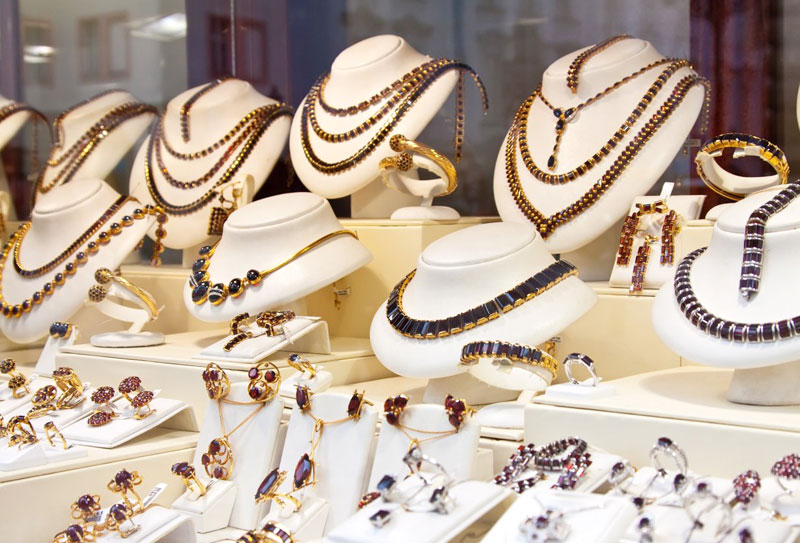Introducing the Rich Background Behind Exquisite Estate Fashion Jewelry Pieces
The expedition of charming estate jewelry pieces introduces a rich tapestry of history, mirroring the societal values and imaginative movements of their time. As we take a look at the intricate details and provenance of these items, one have to think about the extensive tales they hold-- stories that may test our understanding of appeal and significance in the world of fashion jewelry.
The Beginnings of Estate Jewelry
The origins of estate jewelry can be mapped back numerous centuries, mirroring an abundant tapestry of cultural and historical impacts. Jewelry offered as an icon of riches and status amongst aristocrats and the aristocracy. As different civilizations arised, special styles and strategies advanced, commonly intertwined with the practices and ideas of their respective societies.

As cultures advanced, estate fashion jewelry began to stand for even more than simple adornment; it came to be a kind of personal expression, with pieces usually gave through generations. This transfer of ownership imbued each thing with stories and memories, further boosting its value. Thus, estate precious jewelry includes a myriad of influences, enveloping the essence of human experience, artistry, and history, making it a significant facet of the fashion jewelry world today.

Noteworthy Historical Eras
Throughout background, various eras have considerably influenced the design and significance of estate precious jewelry. Each duration brought forth unique designs, materials, and cultural contexts that formed the creativity of jewelry-making.
The Victorian age (1837-1901) noted an extensive shift in precious jewelry layout, defined by romantic concepts and complex craftsmanship. Throughout this time around, jewelry often signified personal view and was often used to memorialize considerable life occasions. The Art Nouveau motion (1890-1910) followed, stressing organic kinds and streaming lines, attracting motivation from nature and the human number.
The Roaring Twenties declared the Art Deco duration (1920-1939), renowned for its geometric forms, strong shades, and a feeling of modernity. This era showed the liveliness of allure Age and the need for luxury and opulence. Adhering To World War II, the Mid-Century Modern period (1945-1960) embraced simplicity and capability, showcasing tidy lines and innovative materials.
Each of these historical periods has actually left an indelible mark on estate fashion jewelry, not just in regards to aesthetic charm yet also in the way these pieces show the social worths and technical advancements of their time.
Iconic Style Attributes
Usually, iconic style attributes of estate precious jewelry disclose an abundant tapestry of social impacts and artistic movements. estate jewelry austin. Each piece serves as a visual narrative, showcasing the stylistic preferences of its era and the artisans' mastery. The detailed lattice work common in Victorian jewelry exemplifies the period's fascination with nature and love, often including concepts such as flowers and leaves.
The Art Nouveau movement introduced flowing lines and organic forms, emphasizing the beauty of natural elements. On the other hand, the vibrant geometric patterns of Art Deco precious jewelry show the modernist principles of the 1920s, defined by balance and a focus on industrial materials.
Furthermore, making use of dynamic gemstones and ingenious methods, such as enameling and pavé settings, further identifies these pieces. Shade combinations frequently correspond to certain cultural contexts, with particular stones signifying riches or standing.
Famous Estate Fashion Jewelry Pieces
Estate precious jewelry includes a selection of popular pieces that have gone beyond time, each telling an unique story of its origin. Amongst these, the "Napoleon Diamond Pendant," originally crafted for Empress Josephine, exemplifies luxury with its complex design and historic significance. An additional renowned item is the "Cartier Panther Bracelet," which showcases the famous panther motif that has see this site actually become associated with the Cartier name, mixing artistry with a strong declaration.
The "Bulgari Serpenti" collection, with its sinuous, snake-inspired designs, has astounded collectors because the mid-20th century, signifying luxury and appeal. In addition, the "Maharaja Locket," adorned with a fascinating variety of gems, reflects the grandeur of Indian nobility and the abundant cultural heritage related to estate precious jewelry.

The Value of Provenance
Provenance plays a crucial duty in figuring out the worth of estate jewelry, as it offers a recorded background that boosts the item's value and desirability. An item with a well-documented lineage typically regulates greater costs as a result of its organization with noticeable numbers, historic occasions, or imaginative activities. Collectors and financiers alike are drawn to pieces that tell a story, as these narratives include click reference layers of meaning past plain visual appeals.
The verification of provenance can involve various kinds of documents, such as initial purchase receipts, appraisals, and event documents. Furthermore, narrative histories gave with households can add to the story, boosting the appeal of the jewelry (estate jewelry). The more reputable and thorough the provenance, the extra likely it is to attract focus out there
Additionally, provenance can mitigate problems relating to authenticity; things with well established histories are much less likely my review here to be deemed recreations or fakes. This way, provenance not only boosts the innate worth of estate fashion jewelry yet likewise safeguards the enthusiast's investment. Inevitably, a compelling provenance changes a piece from a simple object into a valued artifact of background, making it a coveted addition to any kind of collection.
Conclusion
The expedition of estate precious jewelry discloses a profound connection between creativity and historical context. Eventually, the rich narratives behind estate fashion jewelry not only celebrate private creativity yet additionally envelop the broader tapestry of human history and social evolution.